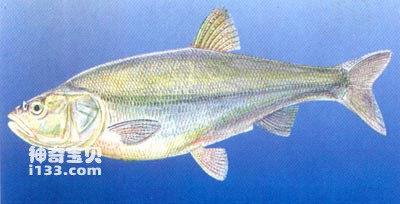Leuciscus merzbacheri, also known as Junggar Leuciscus, belongs to the order Cypriniformes, Cyprinidae, Leuciscus subfamily, and Leuciscus genus. Common name: little white fish. English name: Zhuangarian ide.
Endangerment level: Vulnerable.
The body is long, the sides are flat, and the abdomen is round. The head is slightly elongated and the snout is slightly pointed. Oral position, oblique cleft, the oral cleft reaches below or behind the edge of the eye. The eyes are small and located on the front and upper side of the head. The front end of the lateral line is slightly downward curved, and the scales of the lateral line are 67-77. The dorsal fin is slightly backward; the pectoral and pelvic fins are short; the caudal fin is deeply forked. The upper part of the body's back and sides are gray and black, and the lower part is silvery white. The back and tail fins are gray and black, and the chest, abdomen and anal fins are yellow.

It is a pelagic fish found in cold temperate plain areas. It likes to live in clear slow-flowing or still water bodies. It often inhabits rivers, lakes or still water with slow currents. It swims quickly and lively and likes to move in groups. Especially in spring and summer when the water temperature gradually rises, it often moves in shallow water to look for food. , the water temperature drops in winter and overwinters in deep water. It is an omnivorous fish, feeding on diatoms, filamentous algae, aquatic insects, etc. Generally, they reach sexual maturity in 3 winter years, with males slightly earlier. It has the habit of tracing rivers to lay eggs. Every year from the end of March to the beginning of April, after the peach flood season, they go upstream to lay eggs. The spawning period is May. The number of eggs conceived is 2100-3000.
The Xinjiang Yaluo fish is a specialty fish of the Junggar Basin in Xinjiang and is distributed in water systems such as Lake Aibi, Urho River, Manas River and Urumqi River.
The Xinjiang Yaluo fish is small in size, with a body length of 160-200 mm. It was originally the main economic fish in the production area. Since the 1950s, due to the large-scale development of northern Xinjiang, the population has increased dramatically, resulting in overfishing, deforestation, and damage to water sources, resulting in a significant decline in this species' resources.
animal tags:
We created this article in conjunction with AI technology, then made sure it was fact-checked and edited by a Animals Top editor.